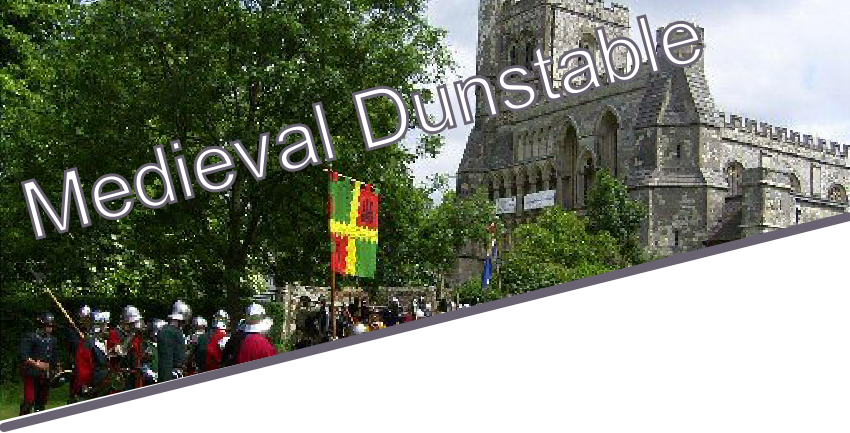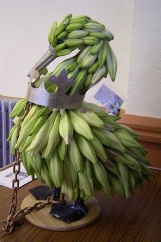
Medieval Dunstable© Webmaster Helen Mortimer Privacy Policy | Terms of Use



Dunstable Inns
Inns
Author Joan Curran
15th century
It is in these early years of this century that we first find the names of three Dunstable inns mentioned – the Lion, the Peacock and the Swan. They stood next to one another in High Street North, on the east side of the road, with the Swan in the middle, the Lion on the south side of it and the Peacock on the north. The Swan was privately owned, but in a conveyance of 1422 the buildings on either side of it were described as being the property of the Priory. The inn was being conveyed to John and Alice Petever from Alice’s father, Thomas Hobbes, the man who had demanded ‘citizens’ rights’ from the Prior in the Peasants’ Revolt. The inn later came into the possession of John Dyve of Quinton, Northamptonshire, who sold it to John Parkins in 1502 and whose descendant, William, founded a chantry in 1515 and endowed a school in Church Street.
We know of another inn which was here at this period, the George, from a list of aliens resident in the town. Aliens coming to live in this country had to pay for a licence to stay here and among licences issued to settlers in Dunstable was one to ‘Janyn, Hostiller atte George’. Whether or not this was the same George Inn that stood in High Street South two centuries later we cannot tell.
1500-1540
Travellers looking for accommodation or refreshment in the town would have had a dozen or more inns and taverns to choose from. Most of them were owned by the Priory and occupied by tenants who paid rents varying from five shillings a year for a small inn to four pounds a year for a large hostelry like the Saracen’s Head. In High Street South there were the Ram, the Angel, the Bull, the George, the Lamme, the Newfaken (New Falcon), the Raven, and the Saracen’s Head; in High Street North there were the White Hart, the White Horse, the Lion and the Peacock, and in East Street there were the Swan and the Lamb. Robert Dermere owned the Cross Keys in Middle Row and left it to his son when he died in 1515.
Most of these names have now disappeared from the High Street, but we still have a White Horse, built on the site of the one where Henry VIIII stayed, and a Saracen’s Head, just along the road from where the original one stood. The first White Hart went long ago, but a later inn with the same name, built in about 1600, is still standing, though known to us today as the local office of the Nationwide Building Society; the medieval wall paintings from inside have been removed are now preserved in Priory House. The building became a private house in about 1780 and another White Hart was built a few yards further along the road, where it stood until the 1960s, when it was demolished to make way for the entrance to the Quadrant shopping centre.

| Archaeology |
| Audio Guides |
| Education |
| Exhibitions |
| Events 2013 |
| Physic Garden |
| Priory History |
| Priory Churches / Lands |
| Town History |
| Virtual Tour |
| Website |
| Archaeology |
| Charters & Bylaws |
| Eleanor Cross |
| Famous People |
| The Fraternity |
| Friary |
| Guided Tours |
| History |
| Inns |
| Dunstable Treasures |
| Kingsbury |
| Middle Row |
| Royal Visits |
| Sheep & Wool Trade |
| The Town |
| Friary Archaeology |
| Bone Study |
| Friary |
| Annals Charters Valor Ecc |
| Archaeology |
| Churches and Lands |
| Guided Visits |
| Audio Guides |
| History |
| Monastic Life |
| Virtual Tour |
| The Augustinian Priory |
| The Canons Route |
| Bedfordshire |
| Buckingham |
| Derbyshire |
| Nothamptonshire |
| Hertfordshire |
| Leicestershire |
| Oxon |
| Priors |
| Annulment |
| History |
| Archives |
| Book Sales & Shop |
| Exhibitions |
| Guided Walks |
| Heritage Talks |
| Physic Gardens |
| Schools |
| Tourist Information Centre |
| Tea-room |
| Visits |
| Priory House Heritage Centre |
| Education |
| Knight |
| Search Results |